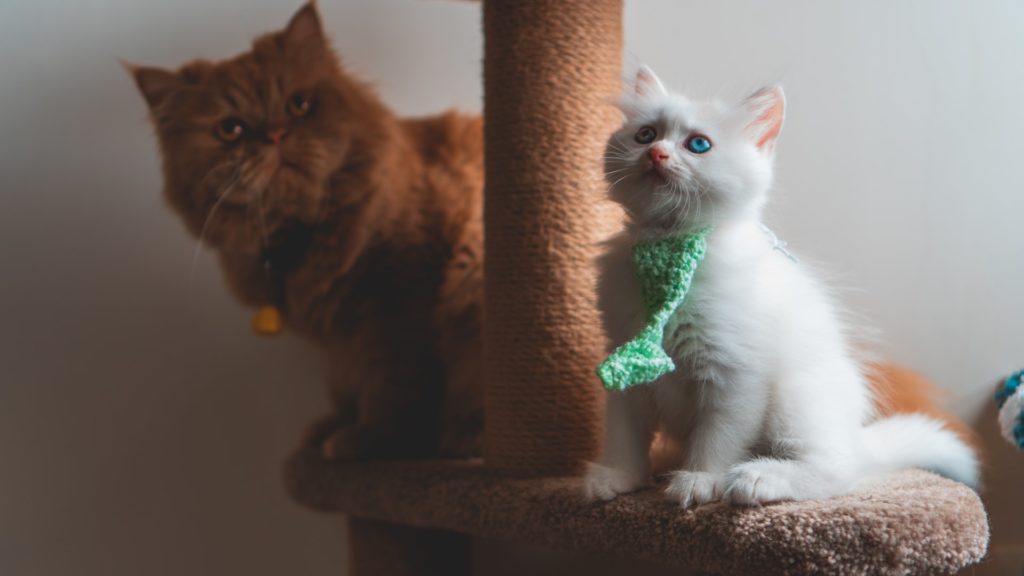Like many deceased rodents and birds, countless couches, beds and chairs have fallen prey to the sharp claws of a cat. But if this happens to your furniture, don’t take it personally: your furniture-scratching cat isn’t remarking on your taste in home decor or trying to antagonize you.
Instead, cats scratch because it’s their way of expressing themselves, marking their territory and rejuvenating their claws. To deal with a scratchy cat, the key is to provide scratching surfaces that work for both you and the kitty, then encourage your pet to use them.
Scratching Solutions
Today’s modern housecat lives in charmed times: many varieties of scratching posts are out there, just waiting for claws to sink in. This is good news for cat owners, as scratching posts give cats something to shred that isn’t your furniture. Regarding these helpful items, the ASPCA has several recommendations:
- Give your cat multiple scratching posts made of different materials. Examples include wood, sisal, upholstery, cardboard and carpet. Once your cat shows a preference, you can purchase more posts in that material in the future.
- Likewise, different cats have preferences between horizontal, slanted and vertical posts; this is another option to test.
- Also test the grain direction to see if your cat prefers raking a vertical grain or picking at a horizontal grain.
- Posts should be sturdy and tall enough to let the cat stretch out fully while scratching.
- Make posts available throughout your home, including near vulnerable furniture and your cat’s sleeping area.
- If your cat hasn’t warmed up to new posts yet, try scenting them with catnip (sponsored).
Toys, too, can give cats ideal scratching diversions. Also, try to play with your cat often, as bored cats are more likely to scratch furniture.
Plastic claw caps (sponsored) are another anti-scratch product but are not suitable for all cats. Consult with your veterinarian before buying them.
Training Your Cat
You can also directly encourage your cat to scratch appropriate items rather than your precious sleeping and sitting surfaces. For instance, when you see your feline using an appropriate post, praise and pet them to encourage this behavior in the future. However, veterinary behaviorist Dr. Rachel Malamed, interviewed by Petco, advises against yelling if the cat reverts to clawing your furniture. This will stress your pet out without changing their behavior.
More productively, you can discourage your cat from scratching furniture by making the furniture less inviting. Plastic covers are a good way to do this. Cats also find aluminum foil annoying to scratch. Additionally, you can cordon furniture off while your pet gets used to scratching toys and posts rather than sofas and beds.
Finally, keep in mind that every cat’s nails require trimming. The Humane Society has published a helpful guide on the topic, but it is firmly against declawing your cat. Instead, most kitties deserve some scratch-worthy surfaces and a bit of praise. And in the unlikely event your cat proves to be a persistent enemy of your furniture, consider professional behavioral help.


